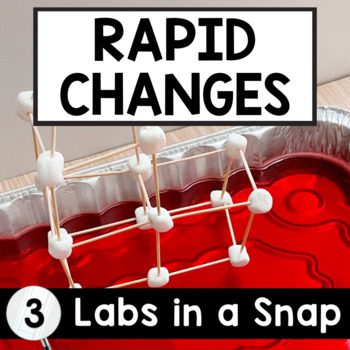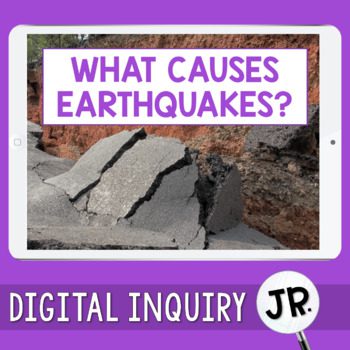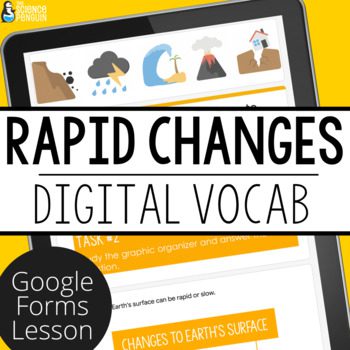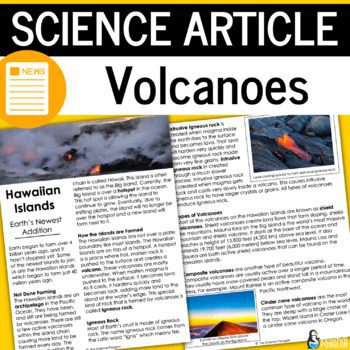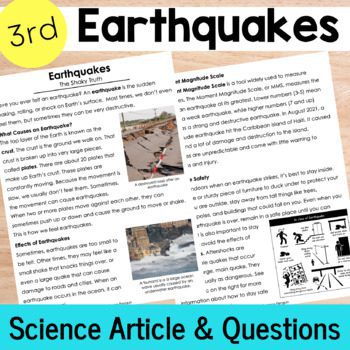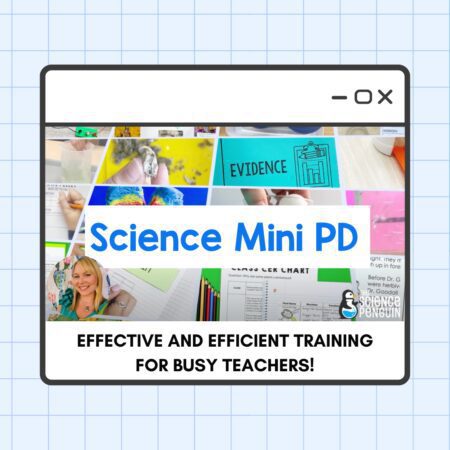
Earth’s surface can be changed slowly or rapidly. Weathering, erosion, and deposition occur slowly over time.
Rapid changes, on the other hand, change Earth’s surface quickly. We focus on landslides, earthquakes, and volcanic eruptions in third grade.
Landslides:
A landslide is a sudden movement of rock, dirt, and debris down a slope. They can happen when heavy rain or earthquakes loosen the soil on a slope, causing it to slide down.
Earthquakes:
An earthquake is a sudden shaking of the Earth’s surface caused by the movement of tectonic plates. Earthquakes can be very strong and can cause buildings to collapse and roads to crack.
Volcanic eruptions:
A volcanic eruption is when molten rock, ash, and gas are released from a volcano. This can happen when pressure builds up inside the volcano and it eventually erupts.
Overall, it’s important for third graders to understand that rapid changes to Earth’s surface can happen suddenly and greatly impact the environment and people’s lives. By learning about landslides, earthquakes, and volcanic eruptions, they can better understand the Earth’s processes and how to stay safe in a natural disaster.
Here are 5 teaching ideas for rapid changes!
🌋 Volcano Model
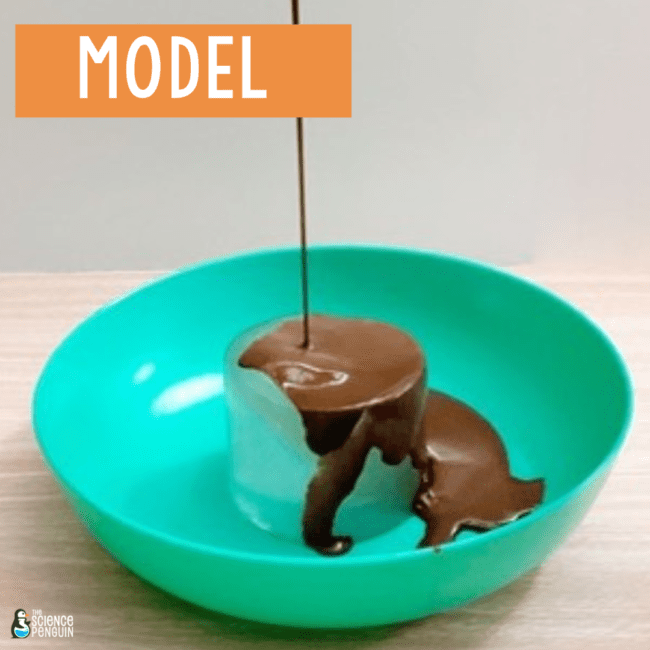
Use a large chunk of ice and a bottle of Magic Shell ice cream topping to model igneous rock formation when lava cools and hardens.
We offer a worksheet and directions on TpT: Labs in a Snap
🪨 Earthquakes STEM
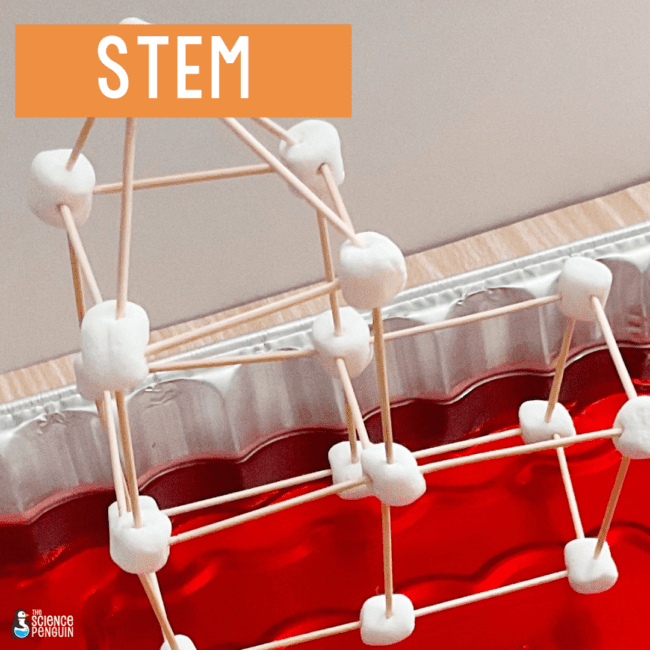
Let your students design a structure that will stand up even through an earthquake!
Prepare a large baking pan of Jello. (We used 2 large boxes.)
Students build structures using mini marshmallows and toothpicks. Super fun!
We offer a worksheet and directions on TpT: Labs in a Snap
Earthquakes Article
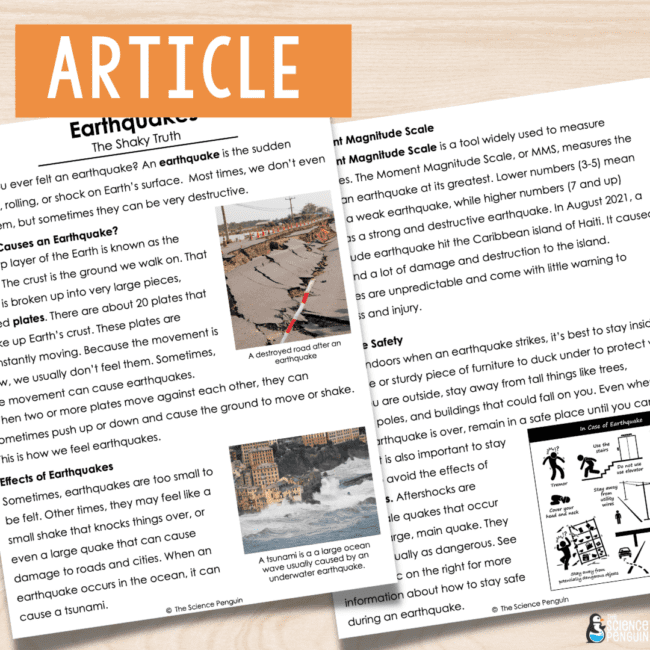
Let’s read to learn! This 2-page science article for 3rd grade describes the causes and effects of earthquakes, the Moment Magnitude Scale, and safety precautions. Comprehension questions and an answer key are included.
See it on TpT: Earthquakes Article
📱 Rapid Changes Digital Vocabulary Lesson
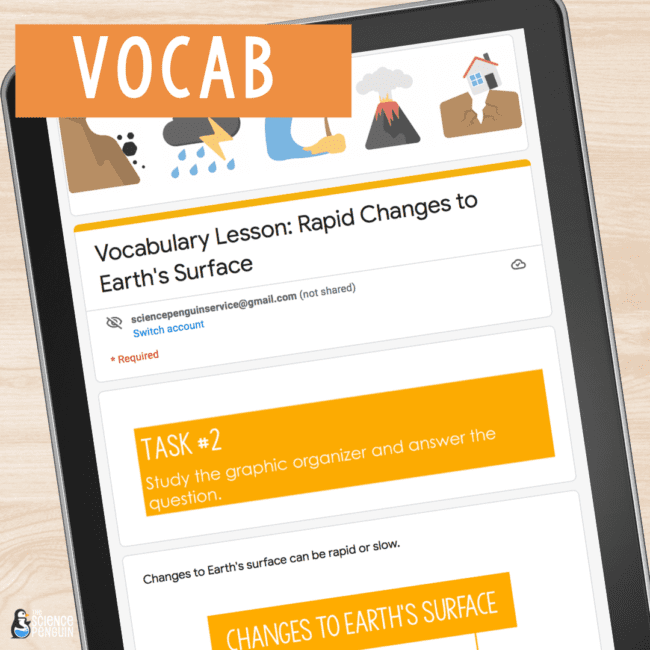
This digital activity can be used whole group, in pairs, or independently to TEACH students vocabulary.
Focus terms: earthquake, landslide, flood, volcano, magma, lava
Other terms: cinder cone, shield, composite, eruption, plates
Students learn and answer questions as they go in Google Forms. It’ll even auto-grade for you so you know how students did!
See it on TpT: Rapid Changes Digital Vocab
💻 Earthquakes Digital Inquiry Jr.
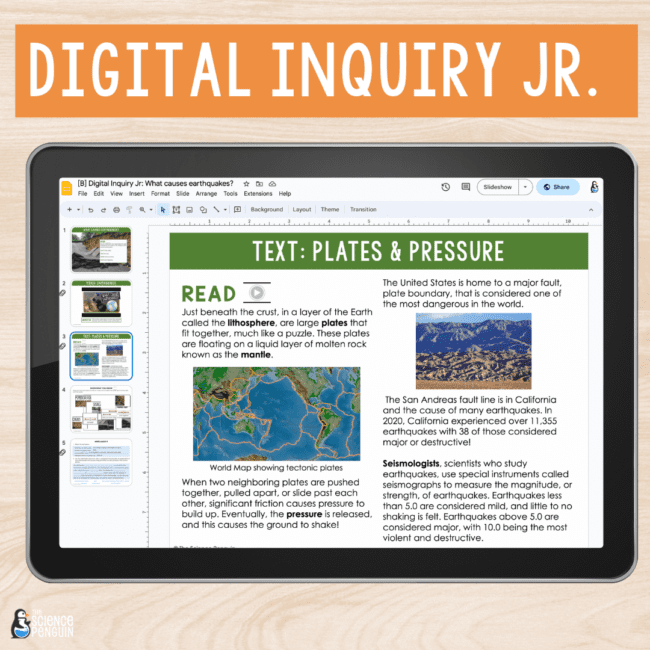
In this activity, students will work independently to gather evidence to explain what causes earthquakes.
There are 5 slides for students:
ASK: Students read the question.
WATCH: Students watch a video that will help them answer the question.
READ: Students read a text and listen to audio that will help them answer the question.
SHOW: Students show what they learned by building a diagram.
See it on TpT: Earthquakes DIJR
Access the Free Resource Library
This is an exclusive library of 40+ science printables, labs, activities, and games for grades 3-6. Sign up and check your email for immediate access.

